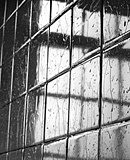All Nonfiction
- Bullying
- Books
- Academic
- Author Interviews
- Celebrity interviews
- College Articles
- College Essays
- Educator of the Year
- Heroes
- Interviews
- Memoir
- Personal Experience
- Sports
- Travel & Culture
All Opinions
- Bullying
- Current Events / Politics
- Discrimination
- Drugs / Alcohol / Smoking
- Entertainment / Celebrities
- Environment
- Love / Relationships
- Movies / Music / TV
- Pop Culture / Trends
- School / College
- Social Issues / Civics
- Spirituality / Religion
- Sports / Hobbies
All Hot Topics
- Bullying
- Community Service
- Environment
- Health
- Letters to the Editor
- Pride & Prejudice
- What Matters
- Back
Summer Guide
- Program Links
- Program Reviews
- Back
College Guide
- College Links
- College Reviews
- College Essays
- College Articles
- Back
WW1 Dogfighter
My name is Eddie Rickenbacker. I am a very well known World War One dog fighter. In fact one of the best. I was known as the ace of all aces. It is said that I was the most successful fighter pilot in WW1. I am often quoted for my 135 near-death experiences. I was one of the best during the time. In fact, I shot down 22 planes, and had a total of 26 kills through 134 flights. I was awarded the Medal of Honor 12 years after the war ended, along with the French Croix de Guerre. Both awards highly coveted for feats of bravery.
The year was 1916, I had just quit my career in car racing to join the Army. I had one year of training under my belt as the US entered WW1. I joined the army with no experience, and no college degree. Getting a spot as a fighter pilot was tough. I was placed as an engineering officer in an instruction facility. I worked up through the ranks until I was finally chosen to serve in my first mission. I was among the first Americans to be sent to France once the United States entered WW1.
In the early months of WW1 the aircrafts were initially planned to be used strictly for observation. As the war progressed, the planes evolved. In the early stages of WW1, the aircrafts were small and could not carry large machine guns. Pilots began to carry grenades, ropes, or bricks. When the pilots saw an enemy aircraft they could throw these into the enemy plane. Pilots soon began to carry handheld guns such as pistols. The biggest problem that both sides of WW1 faced was trying to mount a machine gun on a small aircraft. A year and a half before the United States joined the war, a french fighter had solved the problem. He redesigned parts of the plane so he could mount a machine gun on it. In his first run he shot down three enemy planes before crashing. The remnants of the plane were discovered by a dutch man who then turned them in to the Germans. Now, both sides had their own version of a fighter plane, which meant neither side had a huge mechanical advantage when it came to aerial battles. Letters of an american aerial combat fighter were found describing the new technology of the fighter planes, along with his desire to fight more German planes.
When the United States joined the war, all the work in designing aircraft was complete. Now, we just had to learn how to fly them. Dogfights played a large role in WW1. What exactly are dogfights? Well, dogfights are a form of aerial combat. Small aircraft designed for battle were equipped with machine guns. Combat planes would shoot down enemy planes by using fancy aerial maneuvers and their attached machine guns. In April of 1918, one year after the United States joined the war, I acquired my first kill. On May 25, 1918 I struck down my fifth plane, also known as an ace-hinting to my name, the ace of all aces. I picked up 5 total aces in my WW1 career. During the next couple of months, my squadrone and I proved to be very successful. Why was this important? Controlling the aerial part of a war is very important for many reasons. If you can control the skies, as we did, then you can spy on your enemies much easier, leading to the success of your ground troops.
In 1919 I was discharged of my air services, retiring with a rank of captain. I was able to greatly help the allies in securing a victory. In conclusion the United States aerial combat of WW1 was very important because we were able to control the skies which helped us spy on the enemies. This led to the Allies gaining more knowledge of the opponents leading to the victory over the central powers.

Similar Articles
JOIN THE DISCUSSION
This article has 0 comments.
